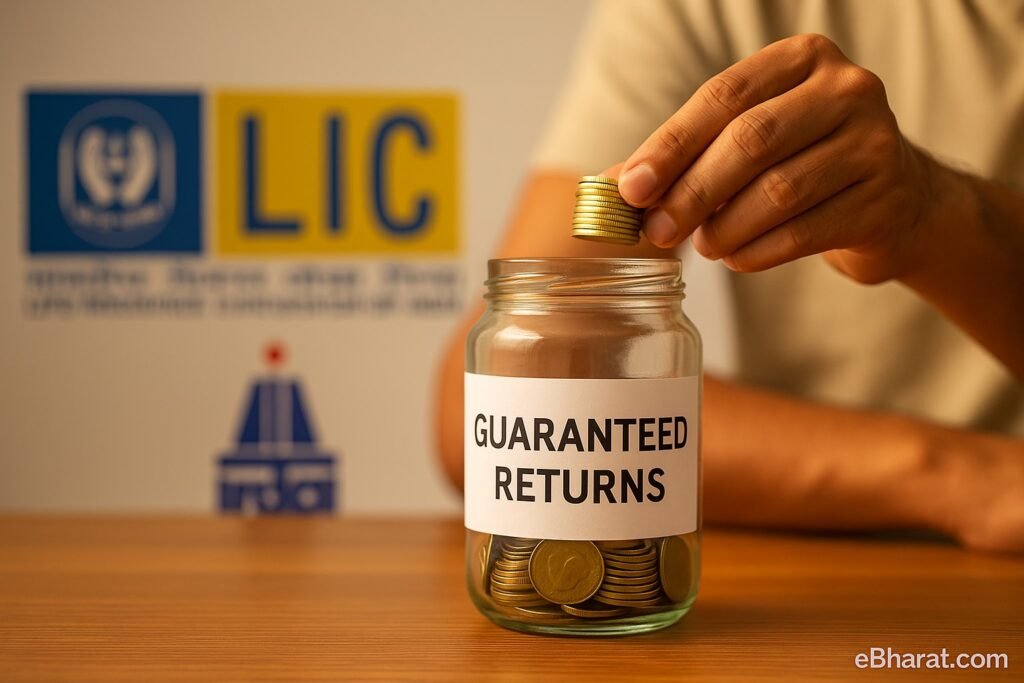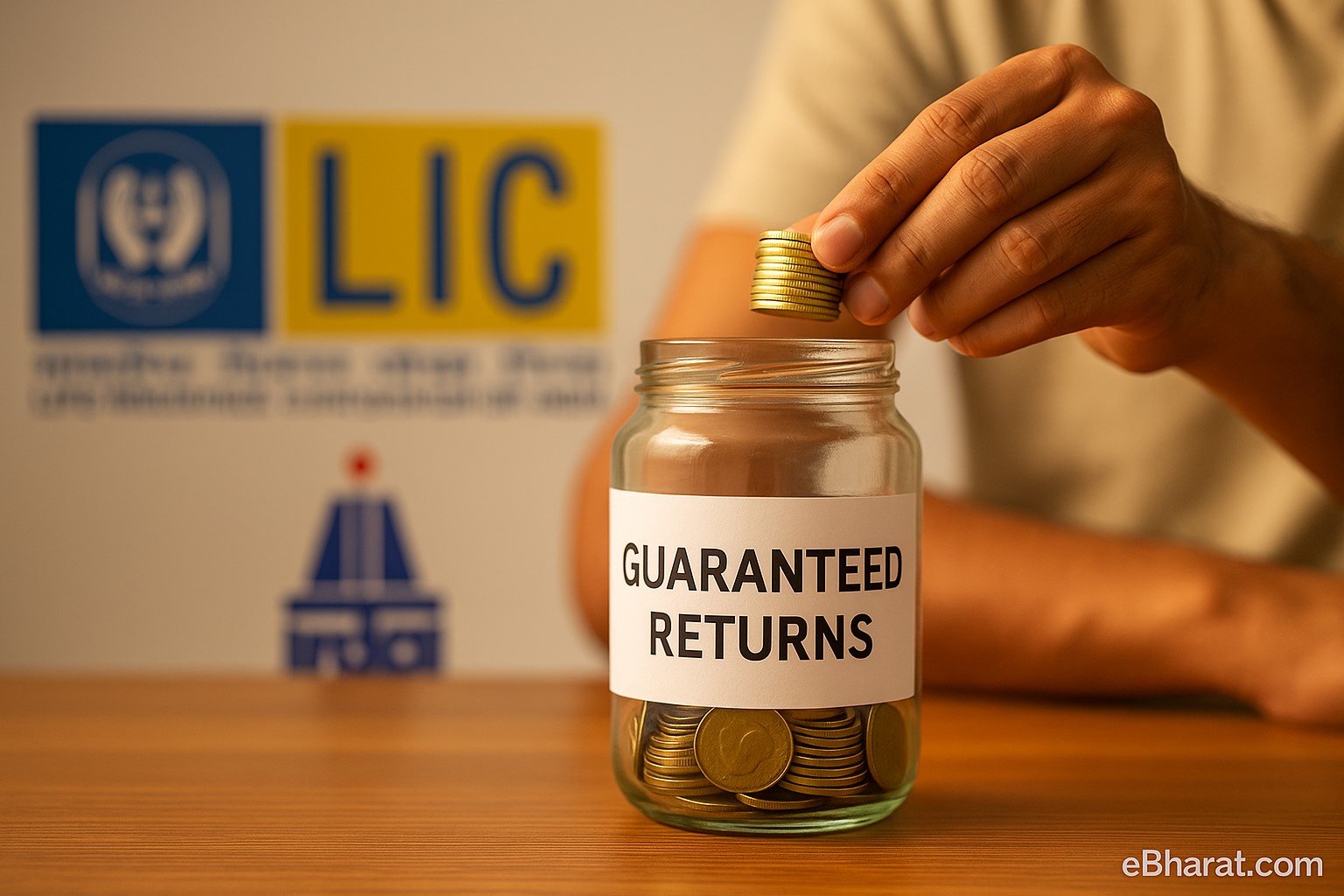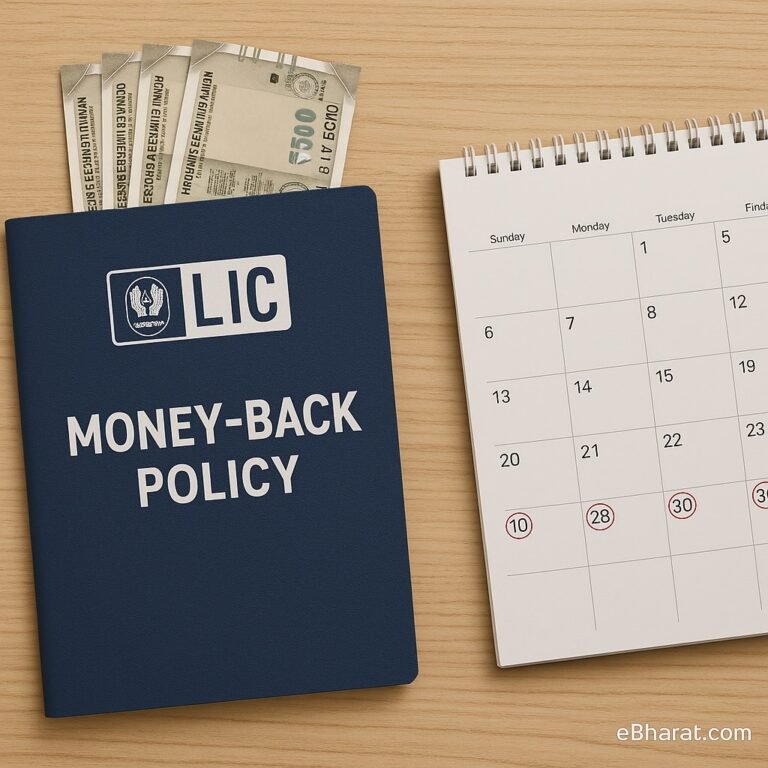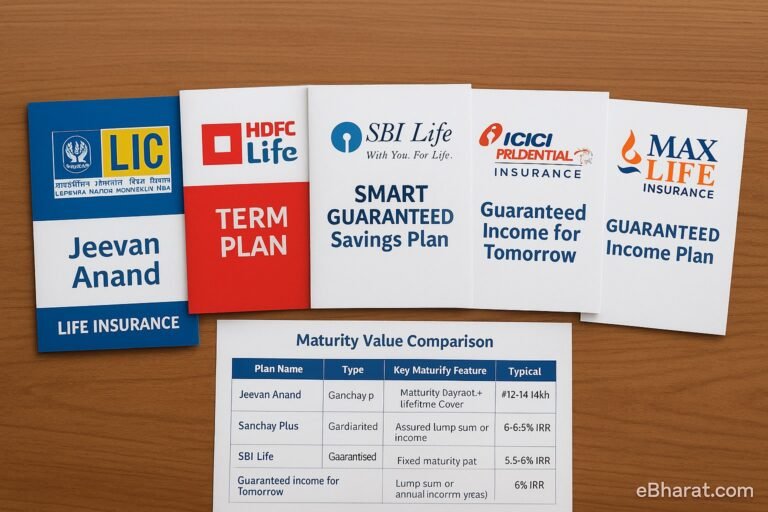
The word “guaranteed” feels safe. That’s why many middle-class Indian families like Guaranteed Return Plans from insurers such as LIC, HDFC Life, SBI Life, and ICICI Prudential. These policies promise fixed payouts after a set term, so they look stable when markets are volatile.
But here’s the reality: guaranteed returns protect you from market ups and downs, not from inflation. In 2025, with prices rising and interest cycles changing, it’s important to know exactly what you’re buying.
How Guaranteed Return Plans Work
| Feature | How It Works |
|---|---|
| Premium Payment | You pay fixed premiums for a chosen term (5–15 years) |
| Payout | Receive lump sum or regular income at maturity |
| Guarantee | Returns are pre-declared at the time of purchase |
| Life Cover | Basic sum assured paid if policyholder dies during term |
What You’ll Like
- Predictable outcomes: You know the maturity value in advance.
- Shield from volatility: No tension about stock market moves.
- Two-in-one: Life cover plus savings in one policy.
- Hands-off: Good for people who don’t want to track markets.
What You Give Up
- Lower growth: Typical returns are around 4–6% p.a., which may be below inflation.
- Long lock-in: Exiting early can attract penalties and reduces returns.
- Tax caution: If your annual premium (for eligible traditional policies issued on/after 1 April 2023) exceeds ₹5 lakh, maturity proceeds (except on death) can be taxable as per Budget 2023 rules.
- Opportunity cost: Safe alternatives like PPF/SSY or high-quality debt funds/bonds can potentially deliver better post-tax, inflation-adjusted outcomes over long periods.
Guaranteed plans give stability, not speed. Your capital feels safe, but your purchasing power may still fall behind.
Real-Life Example
Amit (35) pays ₹1,00,000/year for 10 years in a guaranteed plan. The projected maturity at 20 years is ₹20.5 lakh.
Capital is safe, yes — but purchasing power halves.
Sounds solid, but if inflation averages ~6%, the real value of ₹20.5 lakh after 20 years is roughly like ₹10 lakh today.
When These Plans Make Sense
- You want risk-free, predictable maturity value.
- You already have growth investments and need a stability cushion.
- You’re near retirement and can’t afford volatility.
When to Think Twice
- You’re young and can handle short-term market swings.
- You want inflation-beating growth or higher long-term returns.
- You need big life cover at low cost (→ term insurance fits better).
One-Minute Tax Primer (Budget 2023 Rule)
- For non-ULIP traditional policies issued on/after 1 April 2023, if the aggregate premium you pay exceeds ₹5,00,000/year, the maturity amount (except death payout) may be taxable.
- To keep maturity tax-free, stay within the ₹5 lakh/year threshold (subject to other conditions) or consider policy structuring with advice.
- Death benefits remain tax-exempt.
Tip: Before buying, ask the insurer/distributor to show a post-tax IRR both below and above the ₹5 lakh threshold.
Why It Matters
Guaranteed return plans are safe from market risk but not from inflation risk. For true financial security, balance them with growth-oriented investments.
In insurance, “guaranteed” means stability, not wealth creation. Share this eBharat.com guide so more families understand both sides of the guarantee coin.
Smart Checklist Before You Buy
- Ask for IRR after all costs and taxes.
- Confirm premium vs ₹5 lakh rule and document the tax view.
- Read surrender/paid-up conditions.
- Ensure the policy term aligns with your goal year.
- Compare at least 3 alternatives side by side.
Related Reads on eBharat.com
- Best LIC Plans for Middle-Class Families (₹20K–₹50K Income)
- What Is a Money-Back Policy and Who Should Avoid It?
- Term Plan vs PPF for ₹25K/Month Earners – Which is Better?
🔒 Prefer Stability but Want Better Value?
See which Guaranteed Return Plans offer the best post-tax IRR, lock-in, and payout options for your goal year.
👉 Compare Guaranteed Plans on Insurance+












